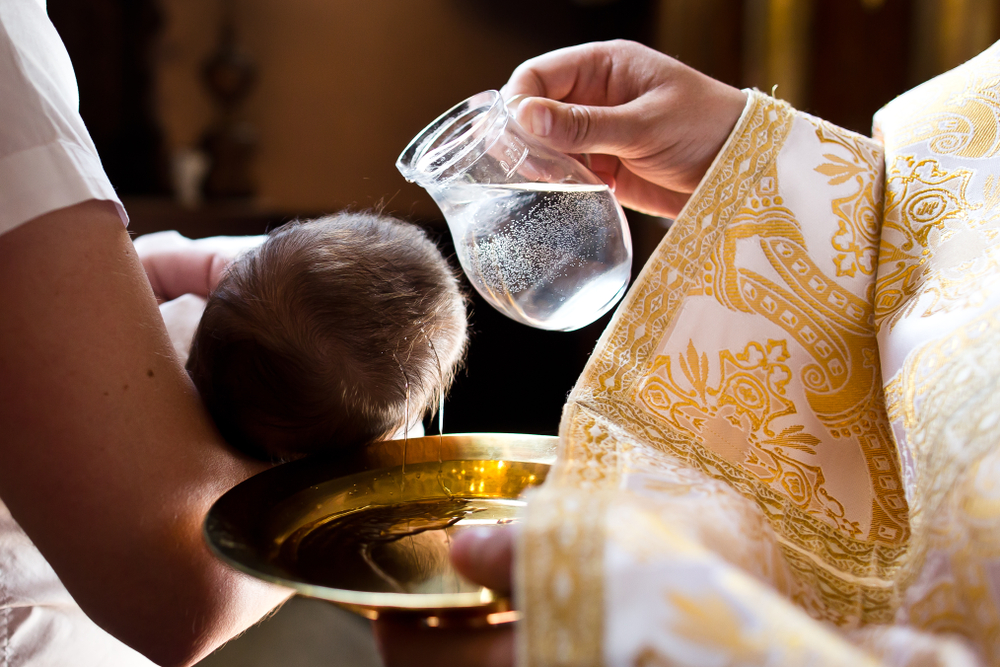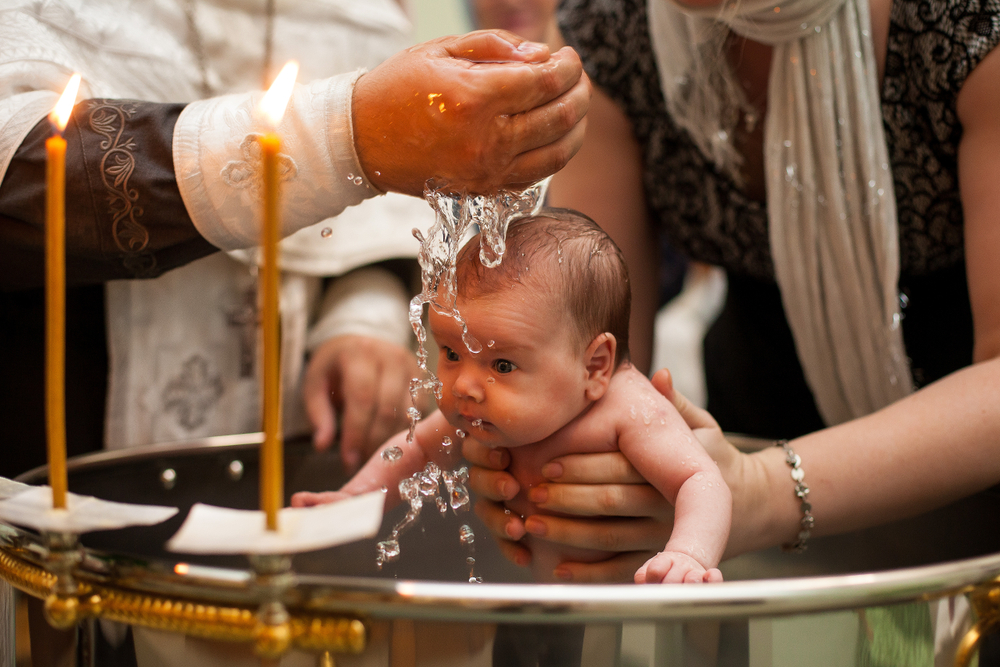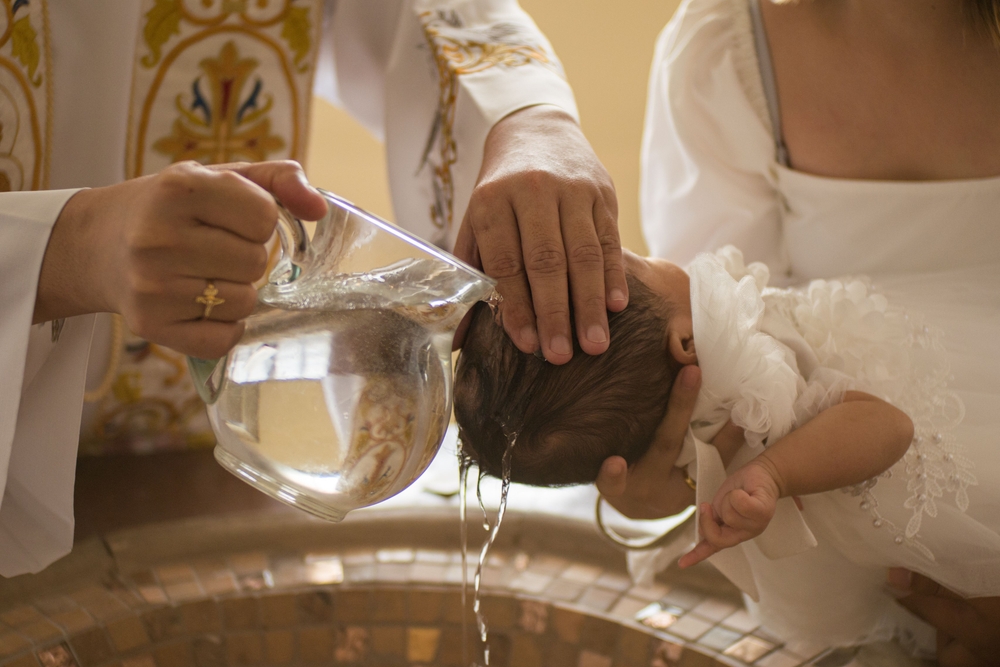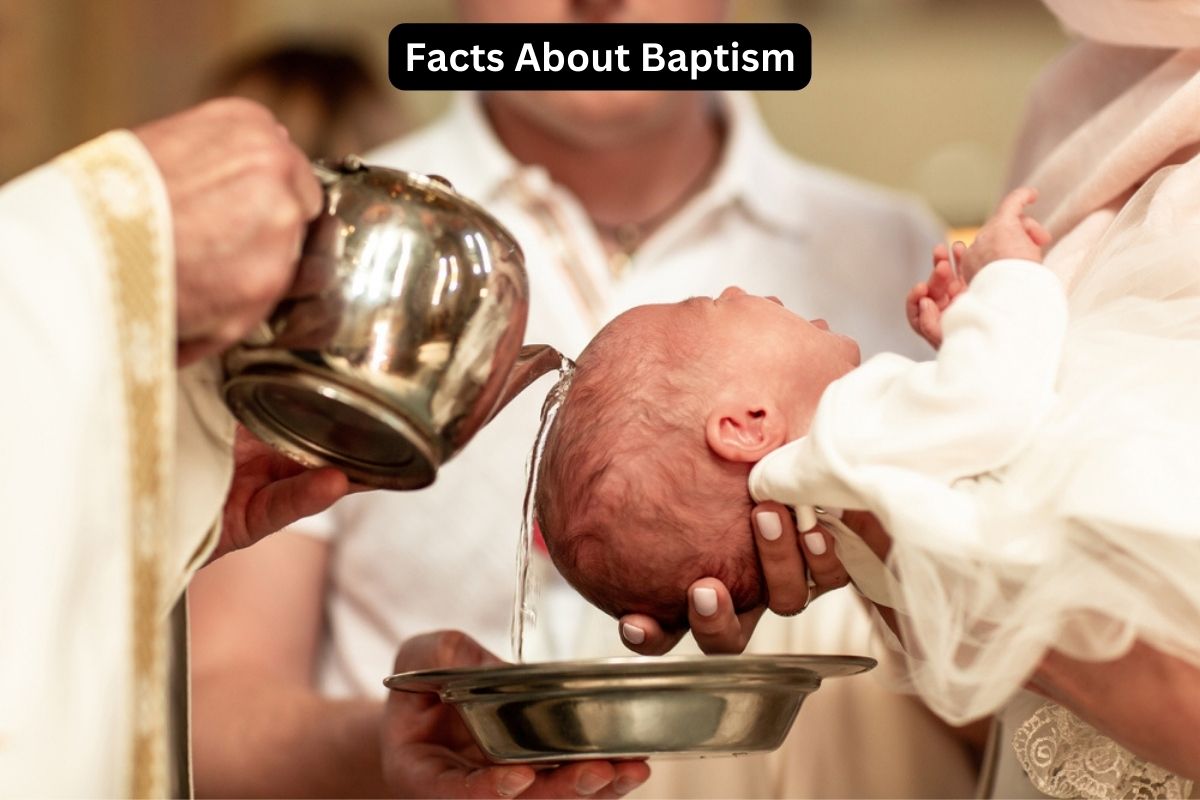Baptism is a significant and widely practiced Christian sacrament or ritual that holds profound spiritual and symbolic importance. This sacred act, rooted in the teachings of the Bible, represents purification, initiation, and commitment to the Christian faith.
It takes various forms, including immersion, pouring, and sprinkling, and its interpretation can vary among Christian denominations.
Baptism is a fundamental rite of passage for Christians, marking the beginning of their spiritual journey and their identification with the Christian community. This introduction provides a glimpse into the diverse facets of this vital Christian practice.
Baptism Facts
1. Christian sacrament or ritual
Baptism is a fundamental Christian sacrament or ritual. A sacrament is a sacred act or ceremony that is believed to convey divine grace or spiritual significance.
Also Read: Communion Facts
Baptism holds a central place among the sacraments observed by Christians, along with other important rites such as the Eucharist (Holy Communion) and Confirmation.

2. Symbolizes purification and initiation
Baptism symbolizes several important spiritual concepts within Christianity. Firstly, it is a symbol of purification from sin.
The act of being immersed in water or having water sprinkled on the person represents the cleansing of the soul from the stain of sin, allowing the individual to start anew in their relationship with God.
Also Read: Facts About Ash Wednesday
Secondly, it signifies initiation into the Christian faith. Through baptism, an individual is formally and symbolically initiated into the community of believers, marking the beginning of their journey as a follower of Jesus Christ. This initiation is often associated with the acceptance of the Christian faith and commitment to its teachings.
3. Foundational in Christianity
Baptism is considered foundational in Christianity and is recognized by the majority of Christian denominations. It is based on the teachings and practices found in the New Testament of the Bible.
The accounts of Jesus’ baptism by John the Baptist in the Jordan River (Matthew 3:13-17) and the Great Commission (Matthew 28:18-20), where Jesus instructs his disciples to baptize new believers, are central to the Christian understanding of baptism.
While specific beliefs and practices regarding baptism may vary among Christian traditions, its significance as a means of entering the faith and demonstrating one’s commitment to Christ remains a common thread throughout Christianity. It is often regarded as an essential step in a Christian’s spiritual journey.

4. Various forms: immersion, affusion, aspersion
Immersion: Immersion baptism involves the complete submersion of the person in water. This form of baptism is often associated with Baptists and other denominations that practice believer’s baptism. It symbolizes burial and resurrection, signifying the washing away of sins and rising to new life in Christ.
Affusion: Affusion, also known as pouring or sprinkling, is a form of baptism where water is poured over the person’s head or water droplets are sprinkled on them. It is commonly practiced in many mainstream Christian denominations, such as Roman Catholicism and some forms of Protestantism. While it doesn’t involve full immersion, it still symbolizes cleansing and the bestowal of God’s grace.
Aspersion: Aspersion is a variation of sprinkling where a few drops of water are gently sprinkled on the person’s forehead. This form of baptism is less common but is still practiced in some Christian traditions. It is seen as a symbolic act of purification.
5. Based on Jesus’ baptism in the Bible
Baptism has its roots in the Bible, particularly in the New Testament. The practice is prominently associated with John the Baptist, a figure in the New Testament who baptized people in the Jordan River, calling them to repentance and preparation for the coming of the Messiah.
Jesus himself was baptized by John, even though he was sinless. His baptism is seen as an example and a way of identifying with humanity.
6. Trinitarian formula often used
During a baptism, a specific formula or prayer is often recited, especially in Trinitarian Christian traditions (those that believe in the Holy Trinity: Father, Son, and Holy Spirit). This formula typically involves invoking the names of the three persons of the Trinity.
The most common Trinitarian baptismal formula is, “I baptize you in the name of the Father, and of the Son, and of the Holy Spirit.”
This formula underscores the Christian belief in the triune nature of God and signifies the person’s entry into the Christian faith under the authority of the Father, through the work of the Son (Jesus), and in the power of the Holy Spirit.

7. Infant baptism in some denominations
In some Christian denominations, particularly those with a more sacramental theology, infant baptism is practiced. Infant baptism involves baptizing babies shortly after birth, often within the first few months of life.
This practice is primarily associated with traditions like Roman Catholicism, Eastern Orthodoxy, and some Anglican and Lutheran churches.
The theological basis for infant baptism varies but generally includes beliefs that baptism cleanses the infant from original sin, incorporates them into the Christian community, and initiates them into the faith.
Parents and godparents often make vows on behalf of the child, committing to raise them in the Christian faith.
8. Believer’s baptism in others
Believer’s baptism, also known as adult baptism, is a practice in many Protestant denominations where baptism is reserved for individuals who have made a personal confession of faith in Jesus Christ.
This means that baptism is typically postponed until a person reaches an age of understanding and willingly chooses to become a Christian.
This form of baptism is often performed by immersion but can also be administered through affusion or aspersion, depending on the specific denomination’s beliefs and practices.
9. Some believe in baptismal regeneration
Baptismal regeneration is a theological concept held by some Christian groups, particularly within certain branches of Anglicanism, Catholicism, and Orthodoxy, among others. It teaches that baptism is necessary for the forgiveness of sins and the regeneration of the individual’s soul.
According to this belief, baptism imparts grace and washes away both original sin and personal sins, making it an essential step in one’s salvation. It is often linked to the concept of baptismal efficacy, where the act of baptism itself has a saving effect.
10. Associated with symbols like a white robe and baptismal font
Various symbols and elements are associated with the baptismal ceremony:
- White Robe: A white baptismal gown or robe is often worn by the person being baptized. It symbolizes purity, the washing away of sin, and the new life in Christ.
- Baptismal Font: The baptismal font is the vessel used to hold the water for baptism. It can come in various forms, such as a basin or a pool. Fonts are often placed near the entrance of churches as a reminder of baptism’s significance in entering the Christian community.
- Candles: Lit candles are sometimes used in the baptismal ceremony to represent the light of Christ and the person’s spiritual illumination.
- Oil: In some traditions, anointing with oil is part of the baptismal ritual, symbolizing the anointing of the Holy Spirit.
- Cross: A cross may be traced on the forehead of the baptized person, symbolizing their identification with Christ’s death and resurrection.
These symbols and practices vary among Christian denominations, and the specific details of a baptismal ceremony may differ significantly from one tradition to another. However, the underlying symbolism and theological significance of baptism remain core elements of the Christian faith.
